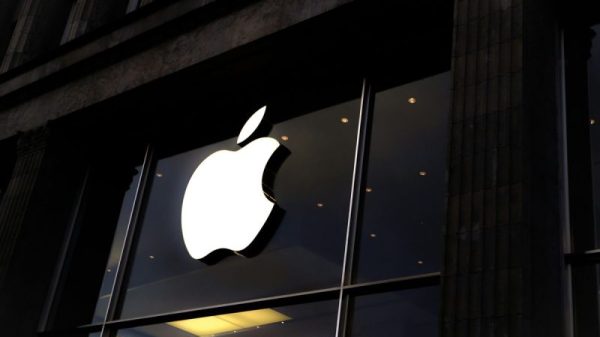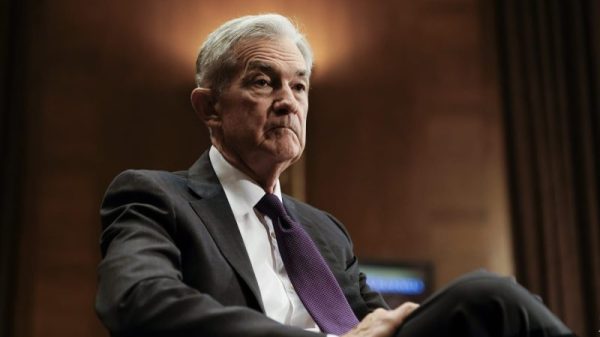In July 2024, all three of the AIER Business Conditions indicators maintained their levels from the previous month. The Leading Indicator inched up from 54 to a mildly expansionary level of 58, while the Roughly Coincident Indicator declined from 83 in June to 58 in July. The Lagging Indicator fell from a contractionary 42 to a slightly more contractionary level of 33.
Leading Indicator (58)
Among the twelve Leading Indicator components, from June to July 2024 seven rose and five declined.
Among those rising were United States Heavy Truck Sales (15.71 percent), US Initial Jobless Claims (4.60 percent), the Conference Board US Leading Index of Stock Prices (2.27 percent), Adjusted Retail and Food Service Sales (0.97 percent), FINRA Customer Debit Balances in Margin Accounts (0.19 percent), the Conference Board US Manufacturers New Orders Nondefense Capital Good Ex Aircraft (0.12 percent) and US Leading Index Manufacturing, New Orders, Consumer Goods and Materials (0.11 percent).
Falling from June to July 2024 were the 1-to-10 year US Treasury spread (-0.61 percent), Inventory/Sales Ratio: Total Business (-0.73 percent), US Average Weekly Hours All Employees Manufacturing (-0.75 percent), University of Michigan Consumer Expectations Index (-1.15 percent), and US New Privately Owned Housing Units Started by Structure (-6.85 percent).
Roughly Coincident (58) and Lagging Indicators (33)
In the Roughly Coincident Indicator, four components rose and two declined. The Coincident Personal Income Less Transfer Payments (0.24 percent), Coincident Manufacturing and Trade Sales (0.19 percent), and US Labor Force Participation Rate (0.16 percent) gained. Industrial Production and the Conference Board Consumer Confidence Present Situation Index fell by 0.64 and 1.63 percent, respectively. Nonfarm payrolls were unchanged.
Among the six Lagging Indicators, four declined and two rose. The declining components were core CPI year-over-year (-3.03 percent), the Census Bureau’s Private Construction Spending (Nonresidential) index ( -0.41 percent), US Lagging Commercial and Industrial Loans -0.19 percent, and US Commercial Paper Placed Top 30 Day Yields -0.02 percent. The Conference Board US Lagging Average Duration of Unemployment (-0.48 percent) and US Manufacturing and Trade Inventories rose.
Over the past twelve months, the Leading Indicator exhibited significant fluctuations, moving between expansionary and contractionary phases. In July 2023, the index was strongly expansionary at 79, but dropped to 46, dipping into contractionary territory. It briefly recovered to 54 in September, before plunging to 29 in October, indicating strong contraction. After that, the index rebounded, peaking again at 75 in February 2024. The trend then showed moderate fluctuations, with values ranging between 54 and 71 from March through July 2024. Over the last six months, the index has shown an increasingly tepid mild expansion, shifting toward a weaker performance.
Over that same time period the Roughly Coincident index remained strongly expansionary for most of the year, with values consistently above 75 from July 2023 through June 2024. In July 2024, however, the index shifted toward a more neutral level, dropping to 58 in a notable moderation from its previously strong expansion. The Lagging Index, meanwhile, has experienced a steady decline over the past six months, with no values exceeding the neutral level of 50 since November 2023. This gradual weakening, highlighted by a drop from 50 in April 2024 to 33 by July, indicates a persistent contractionary trend.
The overarching narrative from the three Business Conditions Monthly indices points is, for the first time in some months, one of relative consistency. The Leading Index shows signs of a mild but weakening expansion, while the Roughly Coincident Index, after strong expansionary performance throughout most of the year, has now moderated toward a neutral level. The Lagging Index has meanwhile steadily declined into contractionary territory. In the aggregate, the three indices suggest growing economic headwinds and a slowing of the broader economy.
Discussion
On September 18, 2024, the Federal Reserve initiated its rate-cutting cycle with a 50-basis-point reduction, a move that Chair Jerome Powell emphasized was aimed at managing downside risks to the economy, rather than signaling a weakened economic outlook. While stronger-than-expected data from industrial production and retail sales suggest underlying economic resilience, a closer look reveals mixed signals. While the rate cut increases the possibility of a soft landing, it remains to be seen whether the timing and degree of those cuts are sufficient to (whatever the economy). The Federal Open Market Committee (FOMC) has indicated further rate cuts ahead, projecting that the unemployment rate will stabilize at 4.4 percent. However, we anticipate a more prolonged effect, with unemployment likely rising to 4.5 percent by year-end and 5 percent next year. The possibility that the Federal Reserve’s rate reductions are aimed not only at mitigating unemployment but also at alleviating annual debt service costs, set to exceed $1.1 trillion this fiscal year, warrants consideration.
The FOMC concluded one of its most closely watched meetings cautioning that such large cuts won’t become routine and described the move as preemptive, directly addressing suspicions that the large cut signals a downturn in economic growth, which is still projected at 2 percent for the year. The 50-bp cut lowered the target range for the federal funds rate to 4.75 to 5.0 percent, with the Fed signaling two more 25-bp cuts this year. While the median FOMC forecast expects the unemployment rate to stabilize, some participants foresee a slightly higher peak. Core inflation projections were revised downward for 2024 and beyond, indicating the Fed’s growing confidence in hitting its 2 percent inflation target. Fed Chair Jerome Powell emphasized that the move was a recalibration of policy, rather than a response to alarming data, though signs of weakening in the labor market and the Beige Book report contributed to the decision. The committee remains open to further large cuts if the labor market deteriorates unexpectedly.
Despite the confidence expressed, and bearing in mind that the Consumer Price Index is not the Fed’s preferred inflation metric, US core inflation unexpectedly rose in August, driven by higher housing and travel costs. The core consumer price index (CPI), which excludes food and energy, increased by 0.3 percent from July and 3.2 percent year-over-year, marking the highest monthly rise in four months. This uptick raises the annualized three-month inflation rate to 2.1 percent (up from 1.6 percent in July). Headline CPI, which includes food and energy, climbed 0.2 percent due to falling gasoline prices. Shelter costs are continuing to rise in addition to airfares, daycare, and insurance. The Fed’s preferred inflation gauge, the personal consumption expenditures (PCE) price index, is due later this month and remains closer to the central bank’s 2 percent target; it will play a more critical role than the CPI in shaping future rate decisions.
The broader economy is showing signs of cooling, particularly as consumers dip into savings. With the labor market softening, consumption is likely to be marked by caution in the months ahead. Although personal income grew in the late summer period, slightly outpacing expectations, this rise was offset by weaker wage growth and a decline in average hours worked. The savings rate drop and consumer reliance on wealth effects from a strong stock market have bolstered spending, but these factors are unsustainable if unemployment continues to rise or the stock market–which rebounded suddenly after the early August near-correction, experiences additional volatility. A cooling labor market and the potential for a stock market correction could quickly temper consumer spending, dampening growth in the last quarter of the year.
Recent jobless claims data suggest that layoffs remain low as companies are reluctant to reduce their workforce, but job cut announcements — a leading indicator — are rising sharply. Economic conditions are cooling, and weaker demand is likely to trigger more widespread layoffs in the coming months. Job cut announcements surged 193 percent in August, the highest since 2009 (excluding the lockdown period in 2020), with the most significant cuts coming in the technology and education sectors. Additionally, the most recent Federal Reserve Beige Book report denoted flat or declining activity across multiple regions, with consumer spending and manufacturing both weakening, signaling that further layoffs could be on the horizon. As a result, the unemployment rate may rise to 4.5 percent by the start of 2025.
The University of Michigan’s September sentiment survey, interestingly, reflects both sides of the Fed’s dual mandate: consumers acknowledge that inflation has eased, but they also perceive a weakening labor market. The overall sentiment index rose to 69.0, the highest since May, which surpassed expectations. But views on inflation were mixed: short-term inflation expectations fell to 2.7 percent while longer-term expectations nudged up to 3.1 percent. Despite this, improved buying conditions for durable goods and a rise in future economic expectations suggest that some consumers anticipate rate cuts in the near term.
To the extent that the survey also reveals growing concerns about the labor market, with more respondents expecting higher unemployment and declining income expectations, inflationary pressures may be giving way to fears about job security, which could weigh on consumer confidence in the coming months. The survey also noted a slight increase in partisan sentiment gaps, indicating that consumer expectations may shift as the presidential campaign gains traction.
Late summer industrial production data offered some encouraging data points, particularly with headline production jumping 0.8 percent. That exceeded both expectations and the consensus forecast of an 0.2 percent gain. Manufacturing production also increased by 0.9 percent, largely driven by a 9.8 percent surge in output from autos and parts, which contributed significantly to overall growth. Consumer goods production rose by 0.7 percent, indicating some resilience, with consumer durables up 5.8 percent.
In what has become a common refrain, though, beneath the surface are more complex circumstances. The majority of the gains can be attributed to a recovery in automobile manufacturing, as other key areas, like consumer nondurables, actually experienced an 0.6 percent decline. Additionally, the manufacturing figures are at odds with PMIs, which indicate a contraction in production activity. The disconnect raises questions about the broader sustainability of the recovery. Moreover, revisions to the July data make August’s numbers look better than they are. July’s industrial production decline was revised down to -0.9 percent, providing a lower base for comparison which diminishes the significance of the August rebound. In other words, the numbers may be less robust than they appear.
Amid this extremely mixed array of economic data, gold has continued its noteworthy ascent, reaching new all-time highs. After the Federal Reserve initiated its monetary easing cycle with a 50-basis-point rate cut, gold surged as much as 1.5 percent, hitting $2,625.77 an ounce. The Fed’s official shift to accommodation weakened the dollar and boosted gold prices. Though the rate cut was widely expected, the beginning of a cutting cycle is traditionally bullish for gold. When a central bank adopts an accommodative monetary stance, such as by lowering policy rates, it tends to result in currency debasement. As the value of the currency declines, gold, a non-yielding asset with intrinsic value, becomes more attractive as a store of wealth and a hedge against inflation, driving its price higher. (Lower interest rates also reduce the opportunity cost of holding the metal, which doesn’t pay interest unless loaned.)
Commodity trading interests have positioned themselves accordingly, with net bullish positions in Comex gold hovering near their highest levels in four years. Historically, gold has increased by an average of 6 percent in the first six months after the start of a Fed rate-cut cycle. Central bank buying, increased safe haven demand due to geopolitical tensions, and strong retail investor interest have further fueled gold’s momentum. In the face of concerns about a broader economic slowdown signaled by warnings from companies like FedEx and Skechers, gold’s role as a safe haven asset continues to attract investors, propelling its gains amid ongoing market uncertainties.
The latest economic data presents a more subdued outlook, with several regions experiencing flat or declining activity as consumer spending weakens and manufacturing contracts. Despite recent upward revisions to GDP, the durability of July’s strong spending is now in question. Employment levels have generally remained steady, but firms are increasingly selective in hiring, with some reducing hours or using attrition to lower workforce numbers. Looking forward, businesses anticipate price and cost pressures to stabilize, though economic activity is expected to remain flat or decline slightly in several regions.
The key issue moving forward is whether the Federal Reserve’s shift toward an expansionary monetary policy will be sufficient to counteract the emerging signs of economic contraction. It remains to be seen if this early phase of monetary easing can stabilize the economy, or if, as seen in past cycles like 1984 and 1994, so-called soft landings can be engineered to avoid a deeper downturn. Although uncertainty regarding the start of rate cuts has now been removed, the course of subsequent rate cuts, a currently too-close-to-call Presidential election in November (with significant tax and regulatory implications), a 40.3 percent rise in business bankruptcies from June 2023 to June 2024, and consumer exhaustion have skewed risks to the downside.
LEADING INDICATORS
ROUGHLY COINCIDENT INDICATORS
LAGGING INDICATORS
CAPITAL MARKET PERFORMANCE

































